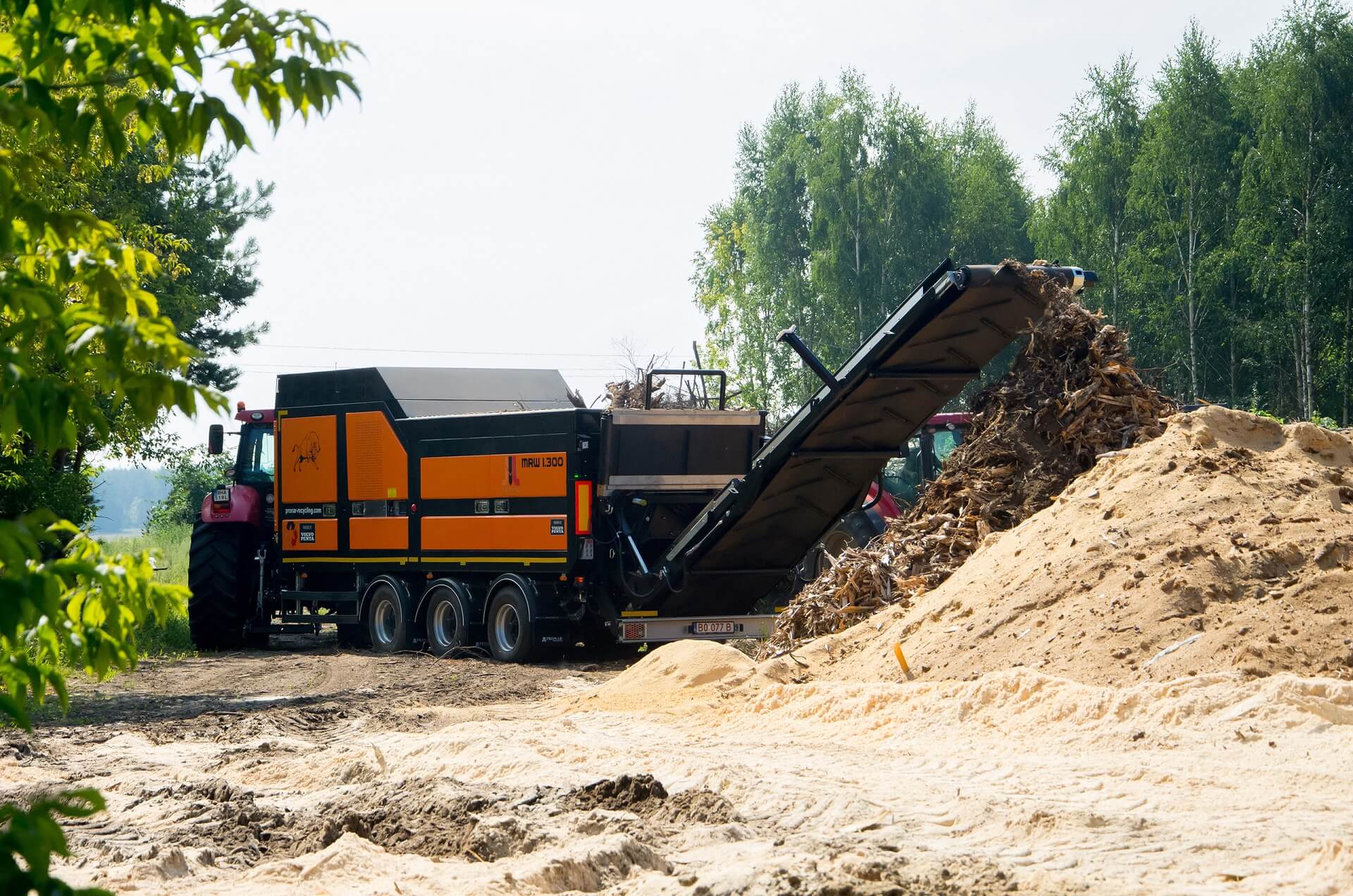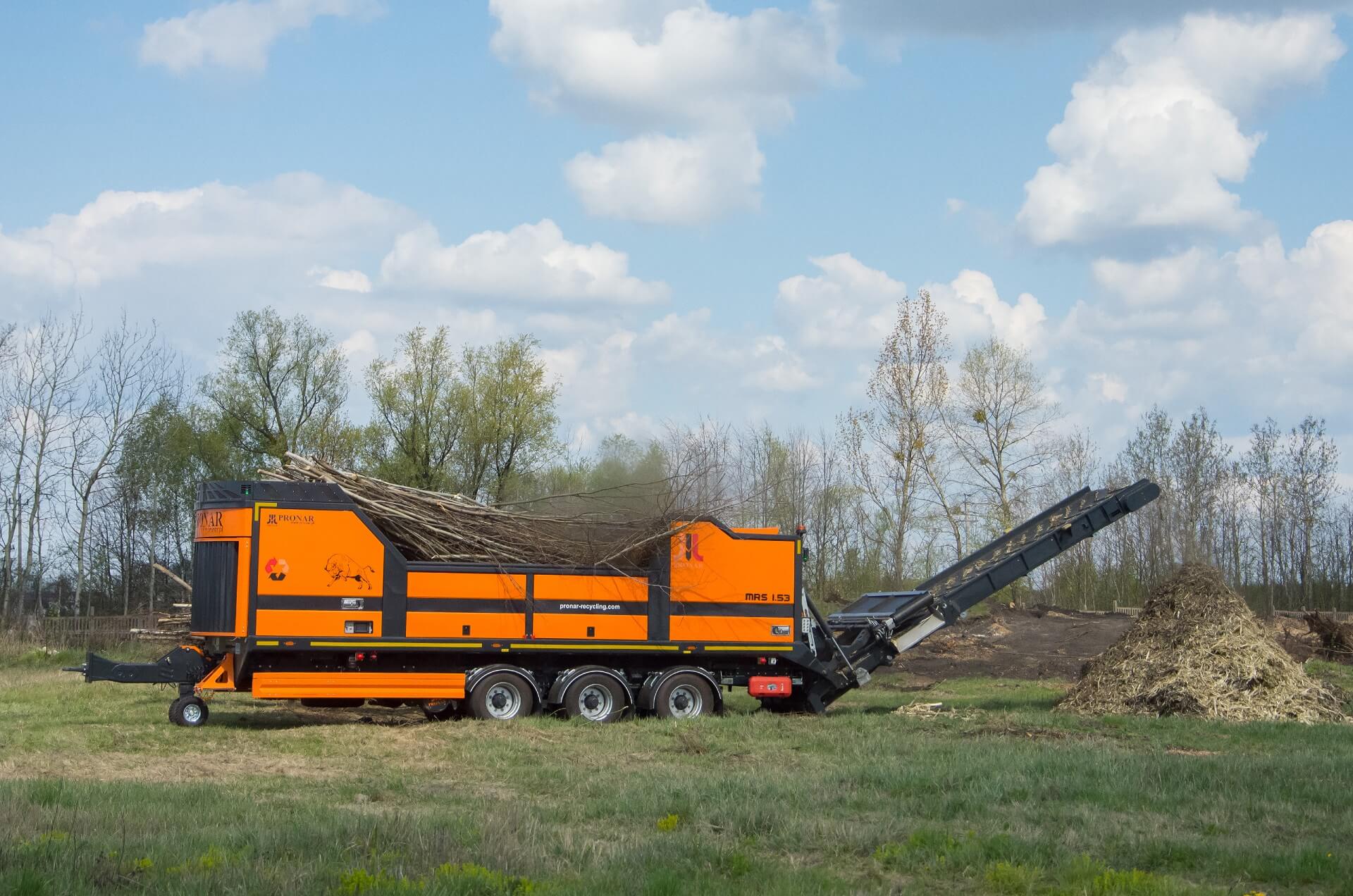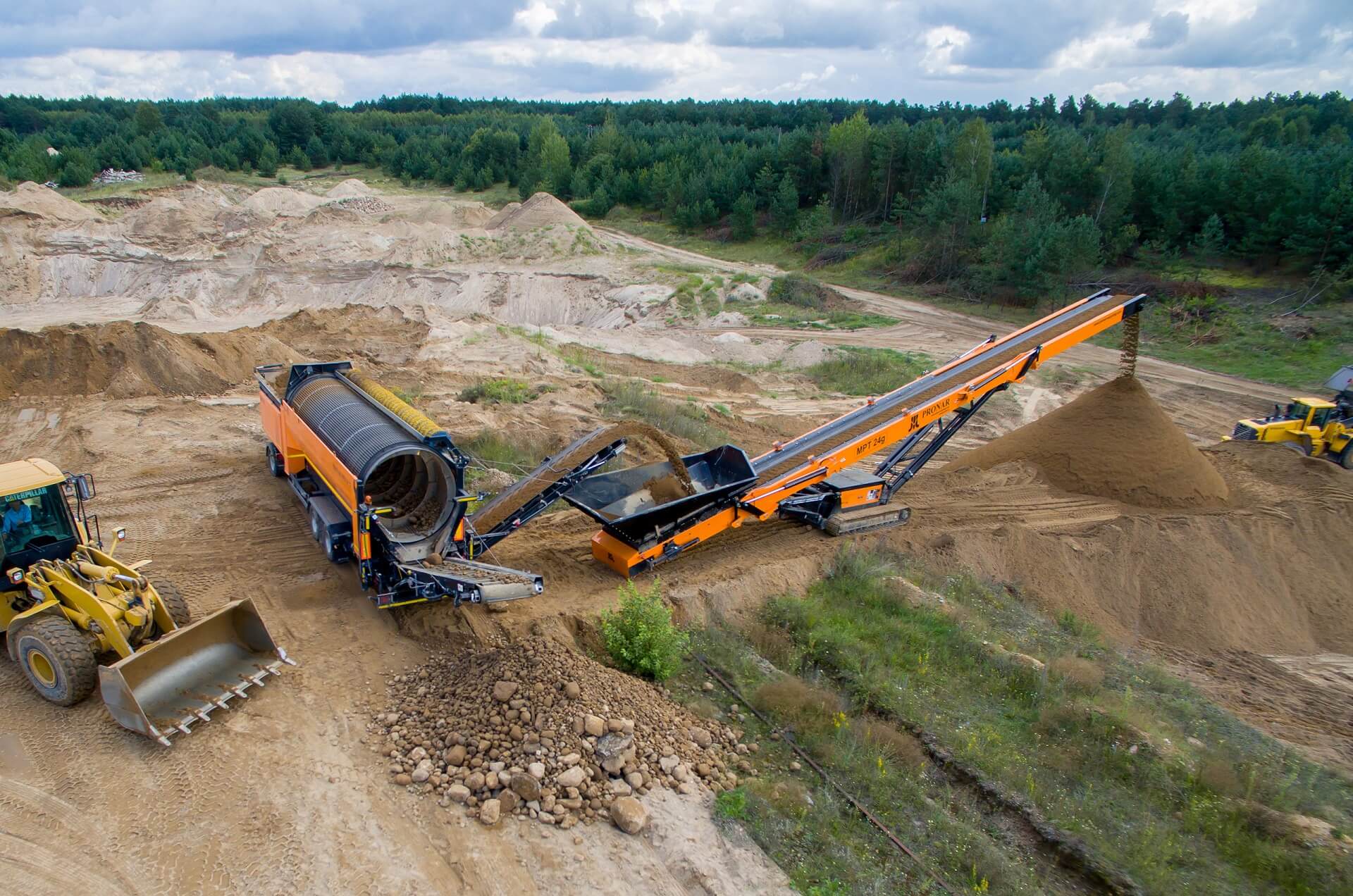Mobile municipal waste processing line
A revolution in waste recycling: healthier, ecological, economic. Discover all the advantages of mobile design.

 Project title
Project title
Mobile municipal waste processing line - the result of industrial research and development works
 Name of Beneficiary/Beneficiaries
Name of Beneficiary/Beneficiaries
Pronar Sp. z o. o.
 Name of programme
Name of programme
SMART GROWTH OPERATIONAL PROGRAMME
 Competition
Competition
FAST TRACK
 Project value
Project value
PLN 49 335 889
 Funding value
Funding value
PLN 24 580 605,60
 Project delivery period
Project delivery period
4th Apr 2017 – 30th Jun 2020
View the results of our work





What problem is addressed by the project?
The mobile municipal waste processing line with the appropriate configuration solves the problem of municipal waste recovery and sorting. Due to its mobility, it can work in "aggressive" environments (landfills, rubble, etc.) without direct human contact with factors harmful to health.
The introduction of innovative Pronar recycling machines to the market will allow for the reduction or even elimination of some types of waste. The main functionality of product innovation in the form of a mobile line for municipal waste processing, created as a result of industrial research and development works, will be:
- mobile structure - enables the movement of machines in the field; it will allow, among others for the rehabilitation of old municipal waste dumps, restoring the environment to its original state,
- versatility of the shredder - the innovative design of the shredder allows for quick replacement of the shredding shafts in order to adapt to the type of shredded material without the need for additional devices,
- the possibility of choosing optimal programs adapted to the load of machines - this option allows to extend the life of the recycling line and allows for economical use of energy necessary to drive the devices,
- remote control of the machine's functions - due to the aggressive environment in which the device will operate, the person operating it will not be exposed to external factors harmful to health,
- GPS application - it will enable the tracking of machine operating parameters from a distance without the need for direct contact; the application will allow for a remote emergency stop of the machine,
- magnetic separator installed above the shredded material conveyor - it will allow to separate the metal from the remaining fractions at the beginning of the recycling process,
- air separator - it will allow to separate light fractions and remove them from the screened material,
- optical separator - will allow for the segregation of different-colored packaging,
- hydraulically opened charging grate - it will enable the separation of large-size elements for further processing, which will directly protect the working parts of the device against damage,
- possibility of using various internal combustion engines - depending on the customer's needs, there is an option to individually select the engine brand,
- possibility of using electric motors - electric motors can also be used to drive machines,
- radiator fan reverse - the radiator fan operating in dusty conditions requires frequent removal of the dirt accumulated on the protective mesh, which causes large interruptions in the operation of the entire device; the automatic air supply reverse allows cleaning the radiator without stopping the entire machine,
- modular construction of the machine - it allows for a different configuration of the line depending on the customer's needs and activities to be performed; the design of the device allows to easily convert it from a mobile version to a stationary version.
Who uses the project results?
Among the main groups of recipients we can see companies from the sector of state-owned and private enterprises. They include, among others companies and firms dealing with waste management, including regional municipal waste treatment plants (RIPOK), waste management plants and composting plants. Characteristics of the market in numbers - in relation to Poland alone - there are over 600 regional waste treatment installations, 2400 companies dealing with the recovery of raw materials and over 170 composting plants.
Each of the above-mentioned groups of recipients expects products that will undergo regular service during operation by specialized mechanics. It is important not only the availability of several models of machines, but also the guarantee of their subsequent operation, proper operation, regular inspections, repairs and replacement of consumables. In the case of Europe, the significant fact is that there are few companies providing such services.
The particularly important importance of recycling machines (including shredders and screens) is noticed in waste management. According to data from OECD reports, EUROSTAT ("Municipal Waste, Generation and Treatment" - collective data of the Organization for Economic Co-operation and Development), in 2014 alone, 10 330.4 tons of waste were collected in an average-sized European country. A dynamic increase in the demand for machines related to the shredding and separation of waste, including bio-waste, is expected.
Most, i.e. over 79.8% of municipal waste is produced by households. Quantitatively, in the case of a medium-sized European country, it is 8 239.8 tonnes of material that needs to be separated and processed, e.g. in this type of machine. The work of screens and crushers with the processed material takes place both with the use of their mobile properties (they can be transported as trailers) and as part of stationary installations, e.g. in regional municipal waste treatment installations.
As potential recipients, companies related to the production of biomass, the wood industry and entrepreneurs specializing in the provision of services using machines and their rental should also be included. According to reports, the average amount of investments in this sector of enterprises (12%) on a European scale is increasing year by year (see eg. "Final report of the third stage of expert opinion aimed at conducting waste tests in 20 installations for mechanical-biological waste treatment", Consortium : University of Zielona Góra, Zakład Utylizacji Odpadów Sp. z o. o. Authors of the Report: Prof. Andrzej Jędrczak, Ph.D., University of Zielona Góra; Emilia den Boer, Ph.D., Wrocław University of Technology). The customer's needs in terms of the product, service and technology are significant. The municipal waste processing market in Poland, like the entire market of Central and Eastern European countries, is facing the need to be open to new technologies in the field of recovery and recycling of raw materials. This will result in both an increase in the innovativeness of the economy, a greater quality of life for residents, and a reduction in the costs of waste disposal. Additionally, it will contribute to the improvement of the natural environment.
Another very important factor is the fulfillment of obligations resulting from Poland's membership in the European Union. In the case of energy production, it is assumed that part of it will be obtained from renewable sources, and their percentage increase over the next five years is increasing intensively. By 2020, Poland should achieve a 15% share of renewable energy sources. Ultimately, in 2020, 45% of energy in the European Union should come from biomass. The demand for biomass in Poland alone amounts to nearly 10 million tonnes per year, and by 2020 an increase of up to 9% per year is planned. So far, large amounts of biomass have been imported, which proves a significant need to increase production in this field. Taking into account the performance of a medium-sized drum screen machine, with about 500 working hours, we get the value of 25 000 cubic metres of material for reuse. It is worth mentioning that wood biomass is also intended for use in other industries than energy or heating. Biomass is used, among others in the furniture industry, which is important to the European and world economy.
Among the favorable factors for the development of the recycling machinery market are the activities of state and local government units supporting the improvement of the quality of life and health of the inhabitants, which depend on the improvement of the environment, increased tourist attractiveness and investment potential of the regions. The advantages of using modern machines for grinding and screening are not only material recovery, but above all its re-use, e.g. in activities such as building bicycle paths, for which construction and road waste are used, or fertilizer production.
What was the greatest challenge during project implementation?
The biggest challenge in the implementation of our project was industrial research related to the machines included in the mobile municipal waste processing line:
- determination of the optimal geometry of the shredding knife, its angle during shredding, various types of materials,
- determination of inter-knife clearances,
- determination of the limit value of the crushing shafts knife blade,
- the influence of technological heat during plasma cutting of working elements on their impact strength and abrasion,
- testing the service life of grinding units after surfacing.
Our advice for other applicants
- Ongoing improvement of the qualifications of the project team.
- Maintaining a high position on the market depends, inter alia, on product innovation.
- Efficient and fast service.